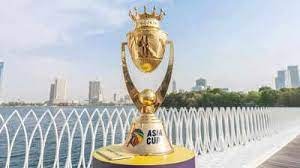It’s a measure of how ancient the Asia Cup is that the first sponsors, back in April 1984, were Rothmans, a cigarette manufacturer that went out of existence nearly a quarter-century ago. Back then, sporting organisations, whether cricket boards or Formula-1, had no qualms about aligning athletic prowess with cancer sticks, and the Rothmans Cup – as well as the Benson & Hedges World Championship of Cricket in Victoria a year later – was a reflection of that.
If you look at the squads for that first tri-nation Asia Cup, you can also see how ODI cricket was still very much an afterthought, even after India’s World Cup win in 1983. The Indian squad included Surinder Khanna – the wicketkeeper-batter who was the tournament’s leading scorer – and Ghulam Parkar, while Pakistan’s 13-member squad contained forgotten names like Saadat Ali and Shahid Mahboob. Both Kapil Dev nor Imran Khan, two of the six great all-rounders of the day, missed the competition, but India won the round-robin style event with a measure of comfort.
Nearly four decades on, you could argue that ODI cricket is in a similar place. Test cricket is still seen as the pinnacle in terms of skill, while T20 leagues mushrooming around the world are the pie that almost every player wants a slice of. Squeezed between the two, ODI cricket has never seemed more irrelevant. It comes into sharp focus every four years with the World Cup, but outside of that, teams have few qualms about resting their leading players for 50-overs matches.
This Asia Cup promises to be different though. For five of the teams taking part – Nepal being the exception – the Asia Cup is one of the last opportunities to settle on a combination before the World Cup in India in October-November. Three years of experimentation with line-ups is now over. This is dress-rehearsal time, and with the exception of a few players still recovering from injury – Jasprit Bumrah the most notable – each side will be as close to full strength as possible.
Remember too that the conditions in Lahore, Multan, Kandy and Colombo won’t be radically different to what the teams can expect during the World Cup. The bowling attacks will definitely have an accent on spin, and the pace bowlers will try out a variety of slower balls to prevent being hammered in the final stages.
Also Read: Colombo’s September Rain Could Impact PCB’s Move to Maximise Asia Cup Revenue
There was a time, even in the 1990s and early 2000s, when ODI tournaments outside of the World Cup carried some prestige of their own. Millions of Indian fans still recall Hrishikesh Kanitkar winning the Independence Cup against Pakistan in Dhaka in 1997, and an exultant Sourav Ganguly waving his shirt on the Lord’s balcony after India had won the three-nation NatWest Series in 2002.
With the World Cup spaced four years apart, and crowds still flocking to venues, such tournaments still had a place in the cricket ecosystem. They gave the host boards valuable revenue, filled the hours on television, and gave generations of players exposure they wouldn’t otherwise have got.
Now, every promising Indian teenager either has an Indian Premier League (IPL) contract or is already on the radar of the talent scouts. Players have so many options – except the Indians barred from playing in overseas leagues – that they have to pick and choose which tournaments to play. Major League Cricket in the United States is the newest entrant, but there are also T10 leagues cropping up here, there and everywhere. And following the astonishing success and popularity of the Tamil Nadu Premier League (TNPL), most states in India have their version.
This Asia Cup will also be unique in having two hosts, or rather two countries sharing the schedule of matches. The timing certainly isn’t ideal as far as the weather goes, with Colombo likely to be buffeted by rain during the Super Fours stage of the tournament. But frankly, where is the gap in the schedule for a tournament of this nature to be staged? Just as India has the IPL, Pakistan, Bangladesh, Sri Lanka and Afghanistan also have their T20 leagues. The money earned from those is the bread and butter for many players, more lucrative in most cases than national contracts. And with those tournaments being played under the umbrella of each cricket board, no one is about to sacrifice revenue to fit in something like the Asia Cup.
For the broadcaster, this event increasingly boils down to two dates, September 2 and September 10. One is confirmed, and the second will also feature India against Pakistan unless Nepal can spring a massive upset. It’s a measure of how fragile cricket’s economy has become that each major tournament makes sure there’s an India-Pakistan match to headline it.
Rothmans and tobacco money went away decades ago, and good riddance. But for more Asia Cups to be played, it needs to stay relevant. Proximity to the World Cup will ensure that the 2023 edition is keenly contested, and closely watched. Beyond that, your guess is as good as ours.
Also Read: India-Pakistan Asia Cup Clash on September 2, with a Repeat Likely on September 10




